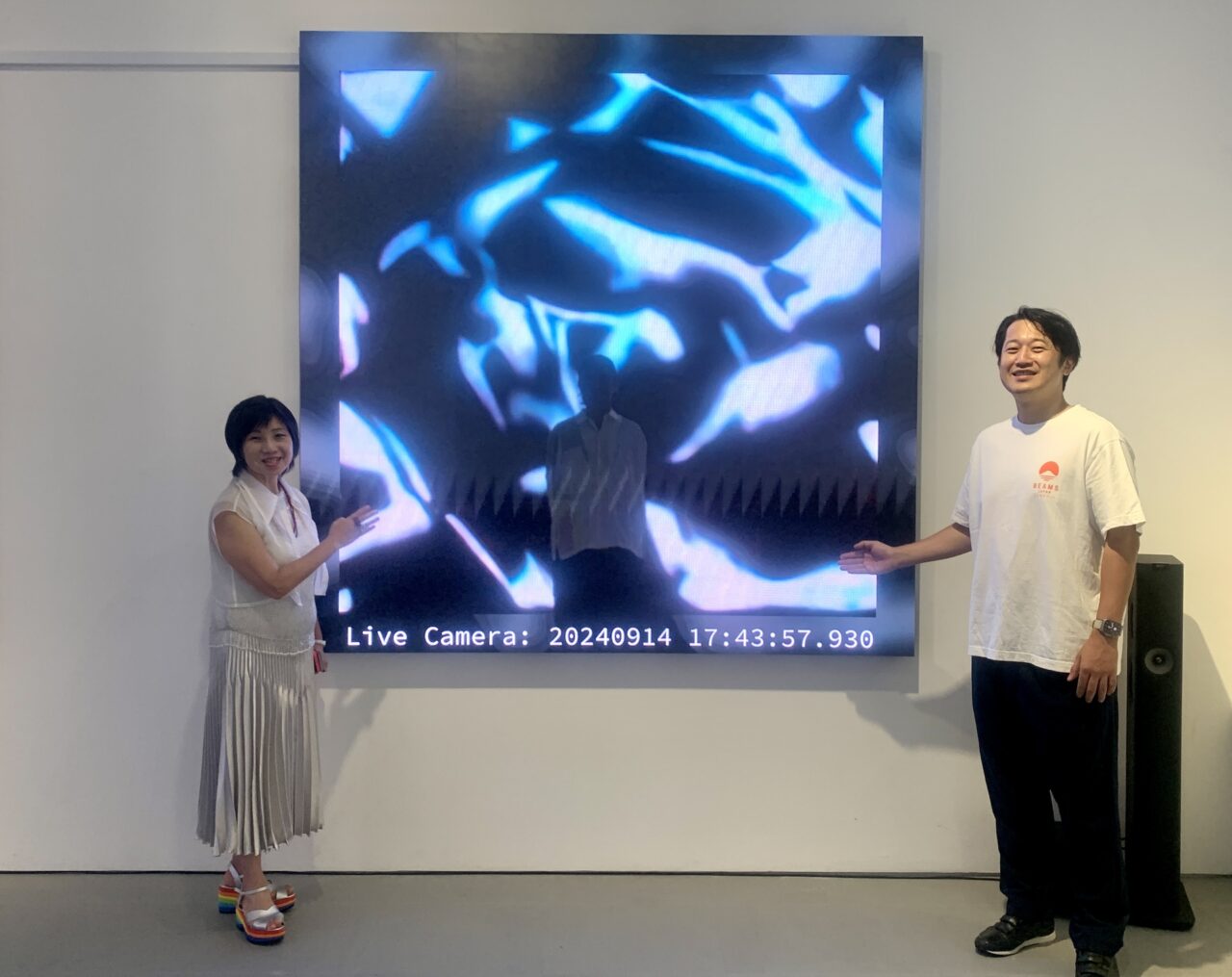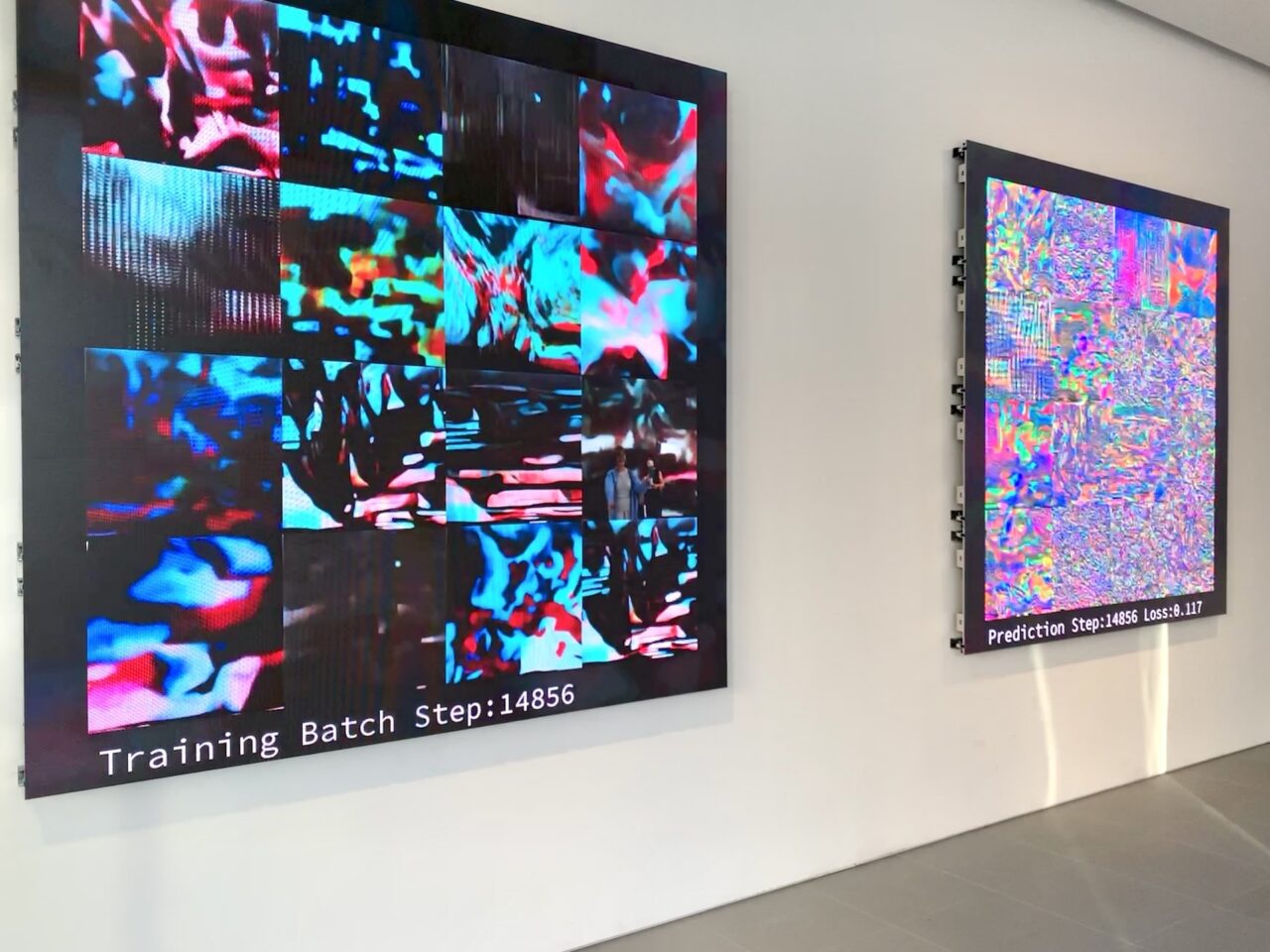INDEX
Observe AI Learning in Real-Time
The exhibition will last approximately three weeks, which is unusual for allowing the AI to learn continuously for such a long time. The development engineer voiced uncertainty about what kind of artwork will result by the final day and whether it will remain intact without collapsing. “By the first day, we were already noticing signs of collapse…” drew laughter from the audience, but Manabe’s subsequent remark, “Please feel free to stand in front of the camera to help prevent that collapse,” resonated deeply.

AI can’t continue to evolve on its own; it needs real-world data for its growth. While I waved in front of the live camera, I had a moment of realization: “AI can be quite charming. I suppose I’ll lend it a hand.” I had always viewed AI as a tool for humanity, but now I found myself becoming a source of nourishment for AI. Wait, what?
As society shifts from “automation” to “autonomy” with AI, I began to ponder whether there might come a day when humans are cultivated specifically for AI learning—like something out of a science fiction story. The fleeting sensation of an inverted hierarchy sent a slight shiver down my spine.

Inside the venue, monitors display the live camera feed as the AI rapidly progresses through its learning steps. On the monitor labeled “Training Batch” in the front left, footage from the past hour is randomly selected, clearly showing human figures. Witnessing my own image being captured as a learning source is truly overwhelming.
The monitor on the right represents “the visualization of the training batch’s errors.” Admittedly, I can’t claim to fully understand the technical details, but it seems that it compares the original data with the images generated by the AI, highlighting discrepancies with color coding for convenience. I liken it to the red corrections made by a teacher during calligraphy class. When the AI successfully generates an image that matches the original data without any discrepancies, the screen turns entirely gray. As of the time of my visit, it appears that the AI still has a lot of work ahead.
























